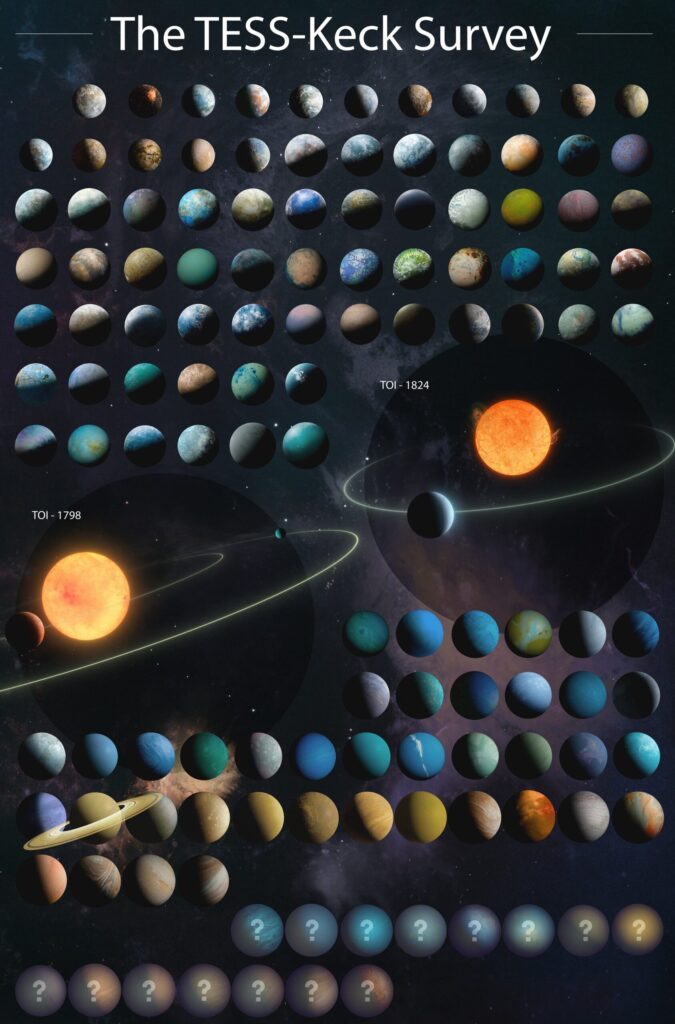The new catalog of exoplanets, created thanks to data from NASA’s TESS (Transiting Exoplanet Survey Satellite) space telescope and the Keck ground-based observatory, demonstrates the incredible diversity of planets outside our Solar System. There are 126 planets in this catalog, for which the radius, mass, density and temperature are determined.

“Relatively few of the previously known exoplanets have a measurement of both the mass and the radius. The combination of these measurements tell us what the planets could be made of and how they formed. With this information, we can begin to answer questions about where our solar system fits in to the grand tapestry of other planetary systems,” said Stephen Kane, an astrophysicist at the University of California, Riverside, and principal investigator of the TESS–Keck Survey.
Among the exoplanets in the catalog is TOI-1798 c, which orbits very close to its star and is exposed to intense radiation. The planet orbits its star in less than half an Earth day and receives more than 3,000 times more radiation than Earth. Due to the intense ionization, such exoplanets probably do not have an atmosphere. However, there are other worlds that are potentially more hospitable, in particular those that orbit red dwarfs.
One of the main questions of exoplanet research is how typical our Solar System is. Gas giants are most often discovered exoplanets because of their large size, which makes them easy to detect. However, Earth-sized worlds are harder to find due to their smaller size.
There is also a class of planets called sub-Neptunes, which are common elsewhere but absent in our Solar System. “Planets smaller than Neptune but larger than Earth are the most prevalent worlds in our galaxy, yet they are absent from our own Solar System. Each time a new one is discovered, we are reminded of how diverse our Universe is, and that our existence in the cosmos may be more unique than we can understand,” said Daria Pidhorodetska from the University of Riverside.
Such catalogs help to determine our place in the universe and the diversity of the planets.
Earlier, we reported on how the super-Earth found turned out to be in a habitable zone.
According to The Astrophysical Journal Letters


